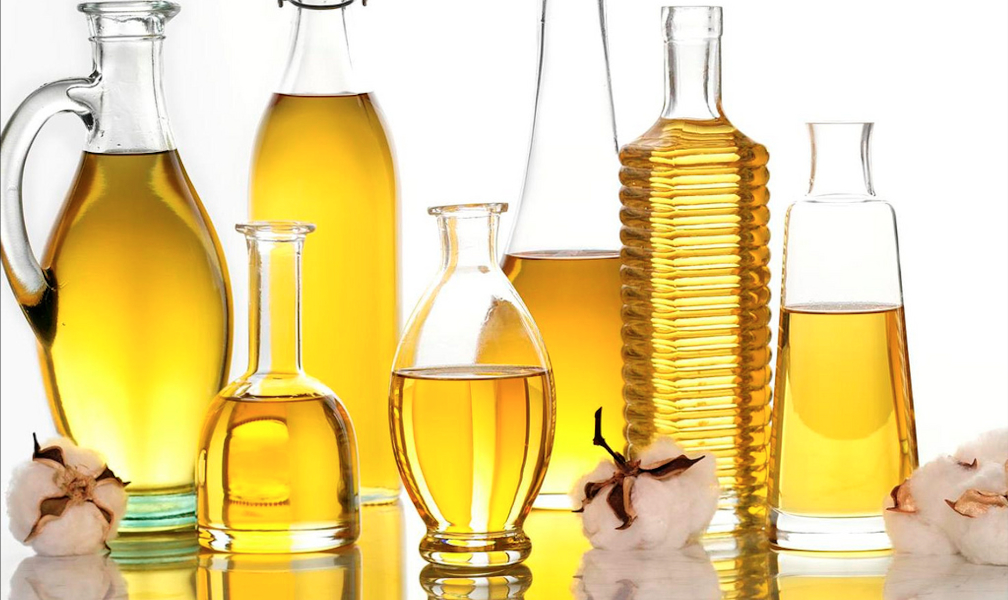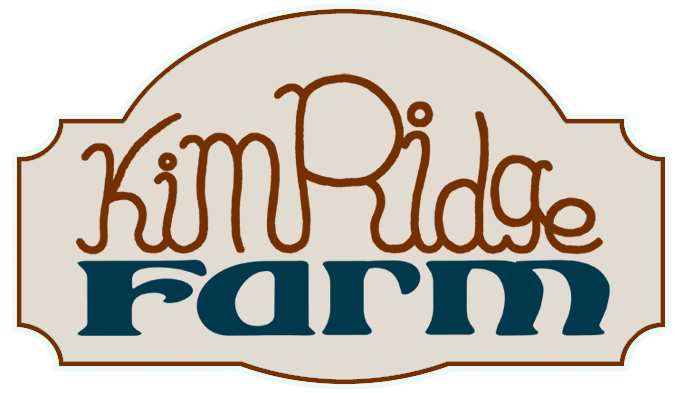| Oils / Fats | Bar Quality | Properties | Recommended Amount |
|---|---|---|---|
| Almond Oil, Sweet | Soft bar. Stable medium lather. Mild cleansing. | Recommended for dry, irritated skin. | 15-20% |
| Apricot Kernel Oil | Soft bar. Medium lather. Mild cleansing. | Emollient properties. | 15% |
| Argan Oil | Soothes problematic skin (?), great for shampoo bars. | 10% | |
| Avocado Oil | Soft bar. Medium lather. Mild cleansing. | Recommended for dry and sensitive skin. High in vitamin E. | 15-20% |
| Babassu oil | Hard bar. Large bubbles. High cleansing. | Milder than coconut oil. | 15-30% |
| Castor Oil | Soft bar. Stable lather. High cleansing. | Drying if used in high amounts. | 10% (higher amounts in shampoo bars) |
| Cocoa Butter | Hard-to-brittle bar. Creamy lather. Long lasting bar. Strong scent. | 15% (can use more, but may cause cracking) | |
| Coconut Oil | Hard bar. Abundant lather. Large bubbles. High cleansing. | Saponified coconut oil is drying. Unsaponified coconut oil softens the skin. Experiment with a 100% coconut oil soap with a 20% superfat. Add after saponification in hot process. | 30% (higher than that can be drying, so be sure to superfat) |
| Grapeseed Oil | Soft bar. Medium lather. Mild cleansing. Shorter shelf life. | Recommended for acne soaps. | 8-12% |
| Hazelnut oil | Soft bar. Medium lather. Mild cleansing. | 5-8% | |
| Hemp (Seed) Oil | Soft bar. Medium silky lather. Mild cleansing | Emollient properties. Keep oil refrigerated. | 15% |
| Jojoba Oil | Stabilizes and suspends lather if used in small amounts; it can kill lather when used in high amounts. Extends shelf life of soap. | Conditions skin & hair, excellent for shampoo bars. | 5-10% |
| Tallow (Deer) | Hard bar. Mild stabilizing creamy lather. White. | Rich in palmitate. In modern times, tallow became replaced with palm oil. | 25-50% |
| Lard | Hard bar. Mild stabilizing creamy lather. White. | 100% lard soap with no superfat makes great laundry soap. | 25-50% |
| Mango Butter | Emollient properties. | 5-10% | |
| Meadowfoam Oil | Creamy leather. Increases shelf life of soap. | Conditions skin. | 10% |
| Neem Oil | Strong scent. | Skin healing (?). Antiseptic, repels fleas and ticks – good for pet soaps and traveler soaps. | 5-10% |
| Olive Oil | Starts out soft, but cures hard. Creamy lather. Small bubbles. | The low cleansing properties of olive oil make it very mild. Soap for sensitive skin, elder skin or baby skin should include high amounts of olive (60%). Castile soap is made with 100% olive oil. | 100% |
| Palm Kernel Oil | Hard bar. Large bubbles. White. | Similar to coconut oil, but less drying. | 15-30% |
| Palm Oil | Hard, long lasting. Mild stable lather. | Used instead of lard or tallow. | 25-50% |
| Peach Kernel Oil | Excellent for skin (?). | 15% | |
| Rice Bran Oil | Soft bar, medium lather, mild cleansing. Gives soap a sheen making it look less dull. | Similar to olive oil. | 5-12% |
| Safflower oil | Soft bar, medium lather, mild cleansing. | Similar to olive oil (?). | 5-12% |
| Shea Butter | Medium hard long-lasting bar. Mild creamy lather. | Emollient properties. | 15% |
| Shea butter | Medium hard long-lasting bar. Mild creamy lather. | Similar to cocoa butter | 5-20% |
| Soybean oil | Soft bar, medium lather, mild cleansing. | Similar to olive oil (?). | 5-12% |
| Sunflower Oil | Soft bar with silky lather, mild cleansing. Slows down time to reach trace. | Emollient properties. | 15-20% |
Author: Kimberly
-
Soap Making Oil Properties Chart for Balanced Handmade Bar Soap
-
Simple and Luxurious Homemade 1-2-3 Lotion
Homemade 1-2-3 Lotion is Gentle and Nourishing, Easy to Make, and Loved by the Entire Family
Do you use lotion on your face, hands, or body? I rely on hand lotion several times a day. Every time my hands come in contact with soap and water, I reach for it. And that’s often! Between working on my hobby farm, gardening, playing with my pets, washing wool fleeces, and handling all sorts of materials, my hands are constantly exposed. This homemade 1-2-3 lotion is a real life saver!
Working with wool, in particular, can be tough on the skin since wool naturally absorbs oils. As I work with it daily, my hands need extra care. So, lotion is a must for me.
If I expose myself to commercial lotions and cremes in such amounts every day, I would be absorbing so many carcinogens, irritants, endocrine disruptors, toxicants, allergens, etc. Additionally, all this chemistry washed down the drain would eventually accumulate enough to disturb the ecosystem.
As Easy as 1-2-3
So, my approach to skin care is very straightforward. My lotion must have moisturizing and emollient properties, and must be slightly acidic. Such modest requirement can be achieved with three simple ingredients. Water (moisturizer), oil (emollient), and wax (surfactant – the agent that homogenizes oil and water). The key to this recipe is in the proportion of these ingredients. Too much oil will leave oil residue on the skin. Too much water will cause the lotion to separate and form water puddles on the surface (that part is easy to fix, just drain away the excess water).
My mnemonic for this magic formula is very simple: remember the magic of 3. The recipe consists of 3 basic ingredients. You will need 3 quarters of a cup of each main ingredient (oil and water). And you will need 30 grams (1 ounce+) of the “supporting” ingredient (scientifically called excipient) – the beeswax.
The simple Homemade 1-2-3 Lotion recipe
- 3/4 cup oil (coconut oil, olive oil, or avocado oil work very well);
- 30 grams beeswax;
- 3/4 cup water (rose water, herbal or green tea are optional).
Notes:
- You can use one oil or any combination of oils as long as the total amount is ¾ cup.
- Add 2-3 tablespoons of glycerin to enhance moisturizing quality.
- Your favorite essential oil can be added as an option. It should be added as the very last step in the making process.
- Add 2 tablespoons of nano-zinc oxide for sunscreen lotion.
- Citric acid or fresh lemon juice can be added to the mixture to lower the pH and work as a preservative. The normal pH of our skin is slightly acidic (low).
- Vitamin E can be added as a preservative.
Directions
The magic 3 likes this recipe. The process also consists of three steps: 1) weigh the ingredients; 2) melt oils and beeswax in a double boiler; and 3) homogenize with an immersion blender. That’s it. Let’s make 1-2-3 Lotion.
Step 1
Weigh beeswax and place it into a vessel for double boiler. The mild honey fragrance of beeswax will give your lotion a hint of honey smell. Yam!

I cut slivers from a beeswax brick purchased from an apiary. This beeswax smells like honey. If you use coconut oil, it helps to pre-melt it on a low power in the microwave. Add 3/4 cup of oil in your double boiler.

I added 3/4 cup of melted coconut oil into the glass measuring cup. Step 2
Place the cup containing the wax and oil into a double boiler and keep until all wax is melted.

I used a veggie steamer this time, which I filled with water above the steaming tray to keep the cup immersed above the oil level. Keep in the double boiler until the beeswax is completely melted.

The beeswax and oil mixture looks very yellow because of the wax floating on top. If you look at the mixture from the side, you’ll see that the layers are still separated.
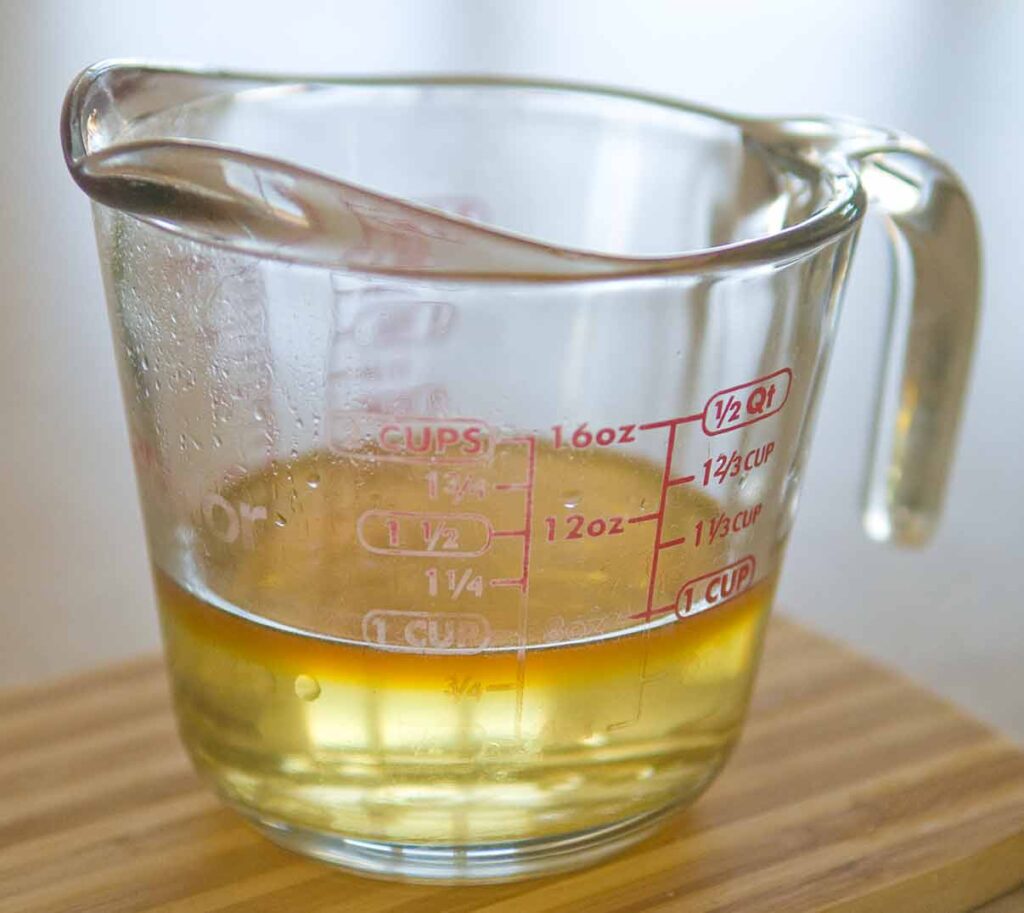
The beeswax is floating on top of the oil. In the next step, add 3/4 cup of boiling water into the mixing cup.

The oil, beeswax, and hot water are in the cup ready for mixing. Some people boil a separate pot of water for this purpose. I simply dip three quoter measuring cups into the water used in the double boiler. My double boiler war perfectly clean to begin with. The mixing cup was clean inside and out. The water is perfectly fine for the lotion. Besides, it has been boiling for a long time — it does not have anything living in it.
Step 3
The final step in making 1-2-3 Lotion is to blend the mixture with the immersion blender.
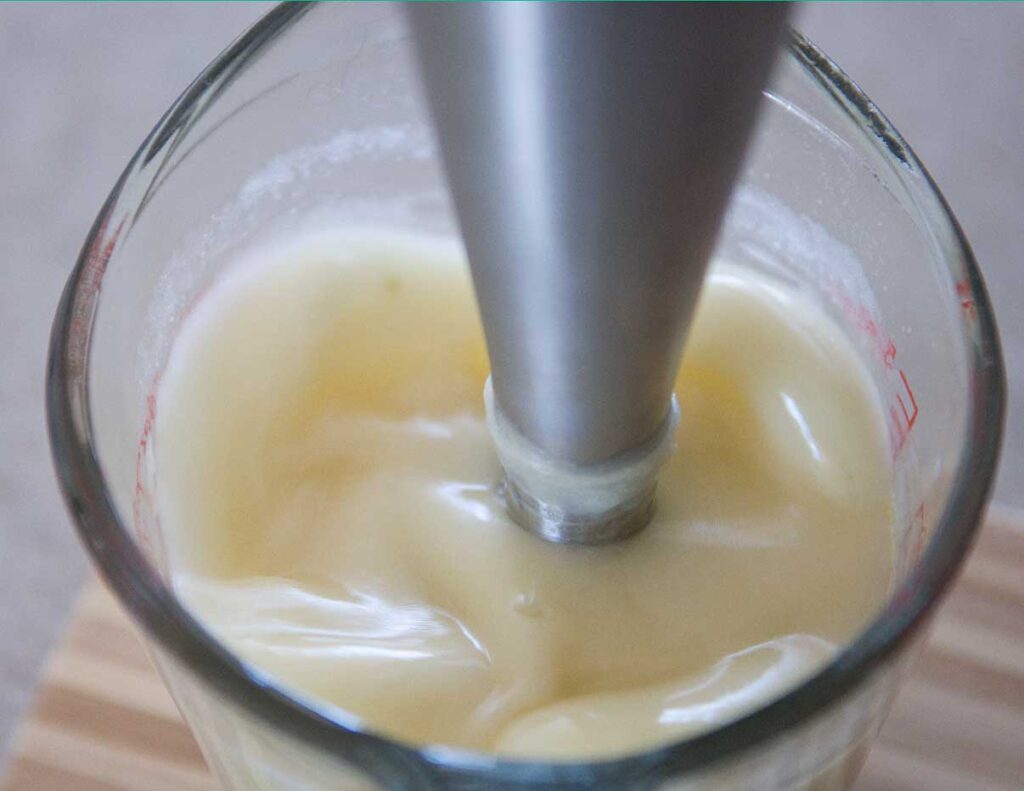
I wait for the mixture to cool a little and start blending when the temperature becomes tolerable to the skin. When using the immersion blender, make sure the mixture is not too hot to avoid burns.
Move the blender up and down to introduce some air into the mixture. It’s ok to pull the blender all the way out and let the air get trapped in the dome. Keep in mind that for the beeswax (surfactant) to work and homogenize the oil and water mixture, it needs air bubbles.
Blend for 3 minutes at a time and let the mixture rest and cool for about 15 minutes. Come back to it every 15 minutes and blend for 3 minutes at a time. You will start noticing that the mixture is becoming more and more white. It may never be completely white if you are using dark oils like olive oil, for instance.
Continue in this fashion until the lotion reaches room temperature and looks completely homogenized.

Your lotion should be thick and completely homogenized. At this time, you can add other ingredients as described in the Notes above. It is not very important when in the making process you introduce any of your additives listed in the Notes. But it is imperative that your essential oil be added at a lower temperature. Otherwise, the fragrance of the oil can evaporate, and the lotion will not have your favorite fragrance.
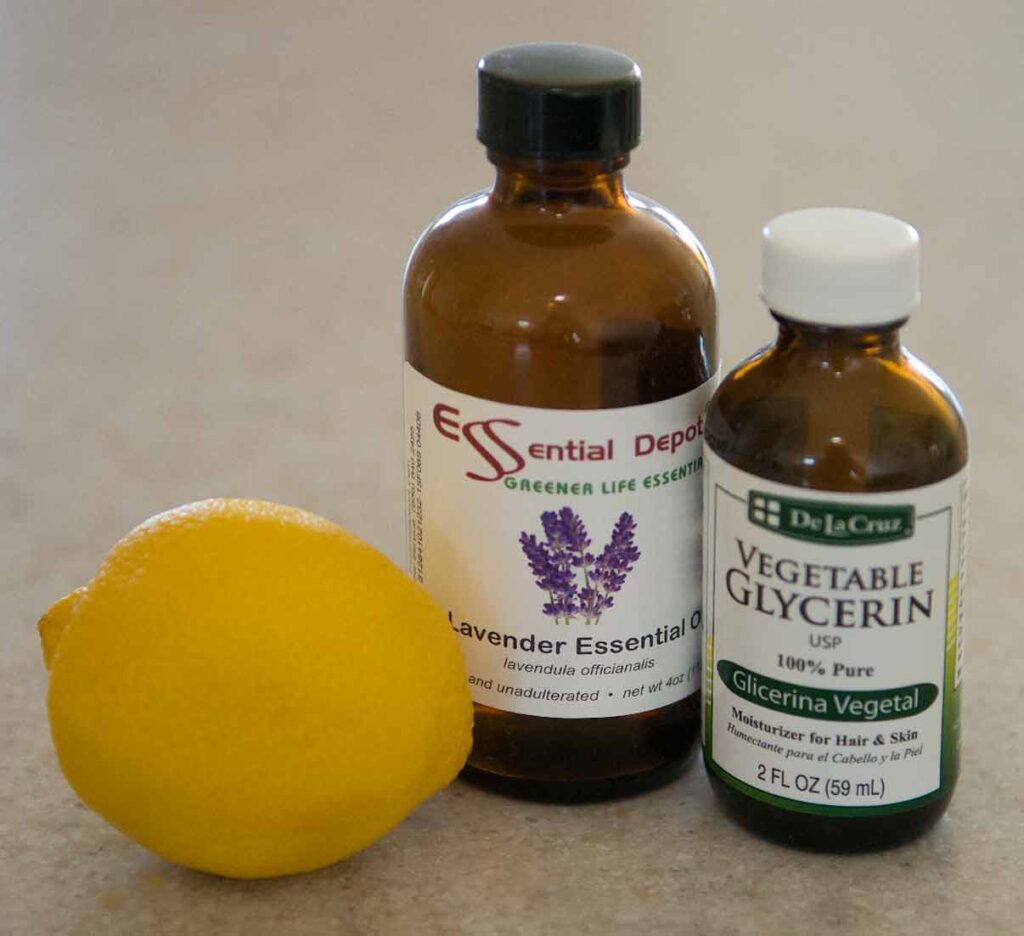
The natural additives will make your 1-2-3 Lotion even better. That’s it, your 1-2-3 Lotion is ready to go into jars. Keep it in the refrigerator for longer storage. Make sure your kids don’t get a hold of it. It looks like a desert and, sometimes, it smells like one.

Homemade 1-2-3 Lotion in the jars. Sometimes, I place a large jar of lotion in the fridge (my stash :)) and a small jar on my nightstand or vanity for use.
If your homemade 1-2-3 lotion is used and kept at a room temperature it should not separate. But separation may happen if you keep it in a console of your car in the heat, for example. Simply reheat your separated lotion and re-mix with the immersion blender. The cooler the temperature, the less likely for your lotion to separate.
Try it. It’s as simple as 1-2-3 and very good for your skin.
Stay safe and healthy,
Kimberly
